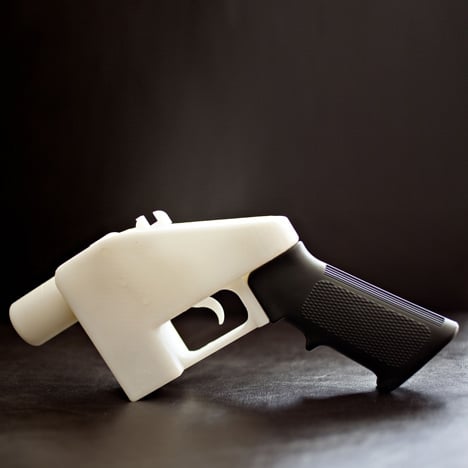
3D-printed guns cause US to review prohibition of plastic firearms
News: American lawmakers are rushing to amend a law banning firearms made entirely of plastic ahead of its expiration on Monday, amid fears that the spread of 3D-printing makes it easier to produce weapons that cannot be detected by airport security.
On Tuesday the US House of Representatives voted to simply renew the Undetectable Firearms Act, which was introduced in 1988 to prohibit plastic weapons that could slip past metal detectors and is due to expire on 9 December. The bill still has to be approved by the Senate and the president when they return from Thanksgiving recess on the same day, but now congressman Steve Israel has introduced a reform bill to alter it; this could delay proceedings and is unlikely to be passed before the act expires on Monday.
Although the law doesn't specifically refer to 3D-printed weapons, it does affect them since most are made out of plastic; should the law expire without renewal or reformation, it would become legal to possess, manufacture or sell 3D-printed plastic guns without metal parts in the US.
The law has been renewed twice since its introduction, in 1998 and again in 2003. However, critics argue that it doesn't go far enough now that increasingly widespread low-cost 3D-printing combined with blueprints for weapons shared online makes the domestic production of plastic weapons a reality. Israel argues that unless the law is altered this time, it would be legal to 3D-print a gun with metal parts that could be taken out before passing through security.
His proposed amendment aims to close this loophole by requiring specific major parts of a gun to be made from metal or a detectable material: the slide and receiver on a handgun, and the slide, receiver and barrel on a rifle. His bill also stipulates that these parts should not be removable without damaging the ability to fire the weapon.
The existing law makes it illegal to manufacture, own, transport, buy, or sell a firearm that cannot be picked up by metal detectors and x-ray machines. It requires that a plastic gun contains at least 3.7 ounces (105 grams) of metal, but does not stipulate that these parts cannot be removable.
"The Undetectable Firearms Act was always a kind of a fake law that never really affected anyone's activity," creator of the first 3D-printed gun Cody Wilson told Mashable. "Now it's just used for bad faith roundabout gun prohibition, just because these people are scared that digital manufacturing makes more people have guns."
His design, The Liberator, complies with the current law by including a block of the required amount of metal, but the metal has no function and can easily be removed. Wilson made blueprints for the design available to download via his company Defence Distributed and The Liberator was recently certified as a lethal weapon by the US Bureau of Alcohol, Tobacco, Firearms and Explosives, which found that a similar gun could be made with a ceramic firing pin in order to go undetected.